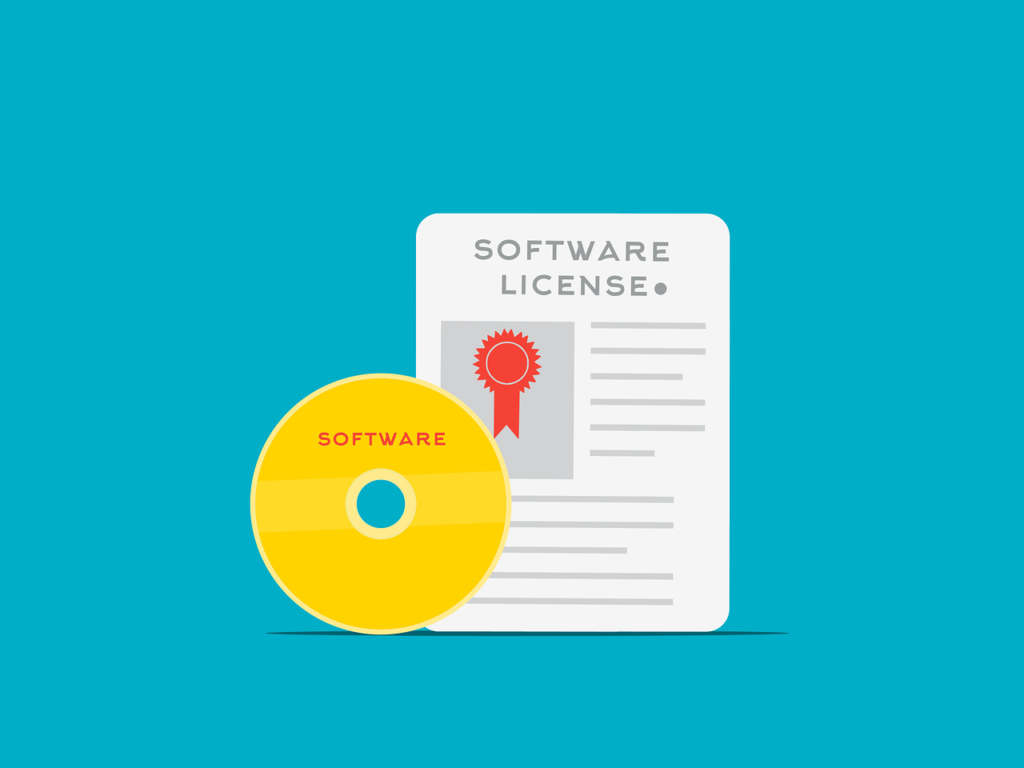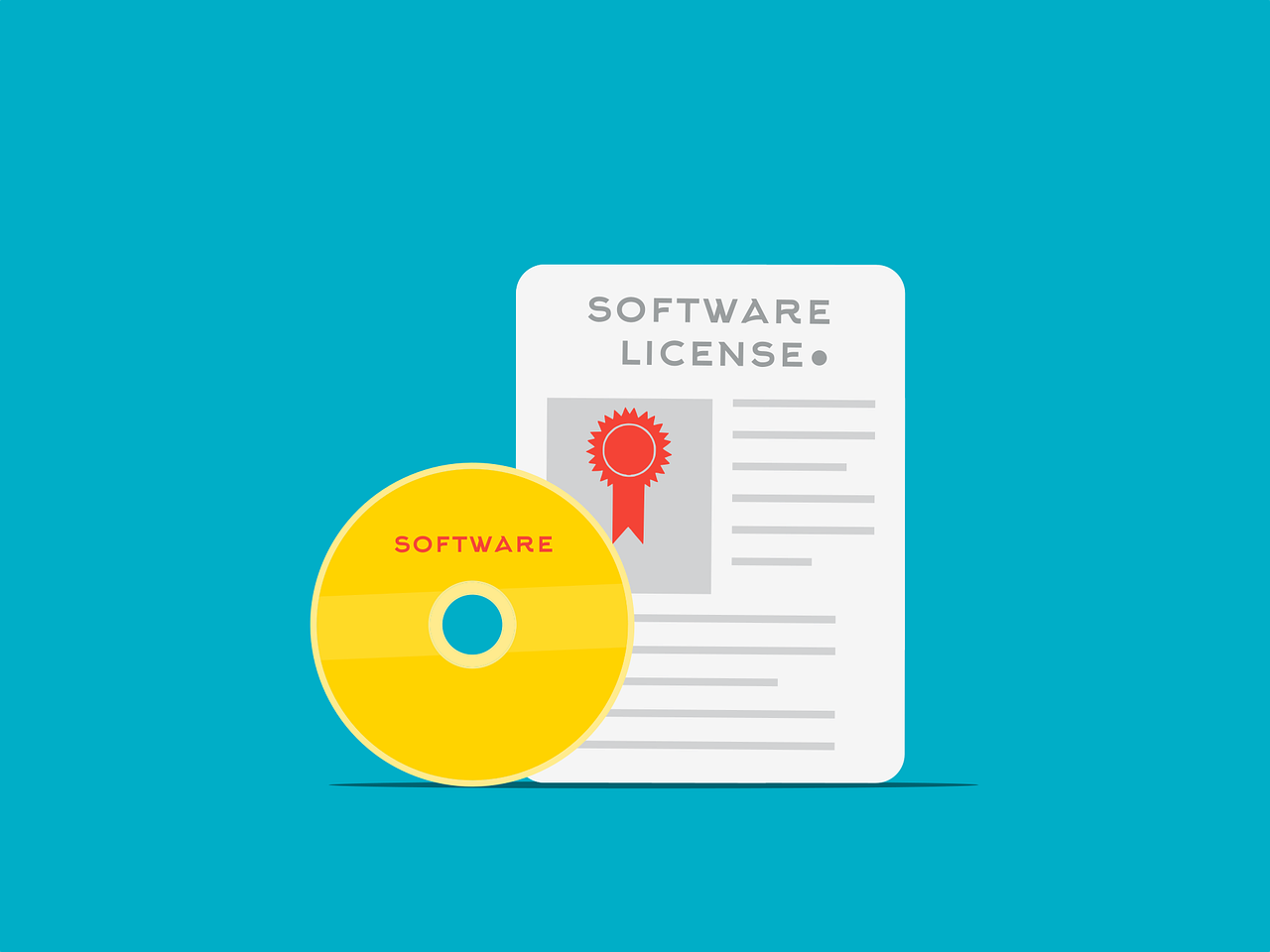SaaS, or Software as a Service, has become an integral part of the modern business world, offering convenience, flexibility, and cost-effectiveness. But have you ever wondered what specific scenarios SaaS is commonly used for? In this article, we will explore the various industries and situations that make the most of this cloud-based software delivery model. From startups to multinational corporations, SaaS has revolutionized the way businesses operate, and understanding its applications can help you make informed decisions for your own organization. So, let’s dive in and discover the diverse range of scenarios where SaaS shines!

This image is property of pixabay.com.
1. Business Applications
1.1 Customer Relationship Management (CRM)
When it comes to managing customer relationships, SaaS is commonly used for Customer Relationship Management (CRM). CRM software enables businesses to effectively track, analyze, and manage interactions with their customers. By adopting a SaaS-based CRM solution, businesses can access their customer data from anywhere, at any time, simply by logging into the software via a web browser. This eliminates the need for on-premise infrastructure and provides real-time updates and insights into customer interactions. SaaS CRM solutions often offer features such as contact management, lead tracking, sales pipeline management, and customer service ticketing, allowing businesses to streamline their customer interactions and drive better customer satisfaction.
1.2 Enterprise Resource Planning (ERP)
Enterprise Resource Planning (ERP) systems are essential to manage and integrate core business processes such as finance, inventory, manufacturing, and human resources. By using SaaS-based ERP software, businesses can gain real-time visibility into their operations and improve efficiency. SaaS ERP solutions offer scalability, allowing businesses to easily add or remove modules as their needs change. Additionally, SaaS ERP systems provide a centralized database accessible from anywhere, enabling seamless collaboration between different departments and locations. This real-time data access and collaboration help businesses enhance decision-making, optimize resource allocation, and streamline operations.
1.3 Human Resource Management (HRM)
SaaS-based Human Resource Management (HRM) software enables organizations to efficiently manage their HR processes, such as recruitment, onboarding, payroll, performance management, and training. By using a SaaS HRM solution, businesses can automate repetitive HR tasks, reduce paperwork, and improve efficiency. With a cloud-based HRM system, employees can easily access their personal information, submit time-off requests, and access training materials remotely. This enables businesses to streamline HR processes, enhance employee engagement, and improve overall productivity. SaaS HRM solutions also provide robust data security and compliance measures, ensuring the privacy and confidentiality of employee information.
2. Collaboration and Communication
2.1 Project Management
SaaS project management tools are commonly used for efficient collaboration and project tracking. These tools provide a centralized space where team members can access project information, communicate, assign tasks, and track progress. With real-time updates, project managers can have a holistic view of their projects and make data-driven decisions. SaaS project management tools often offer features such as task management, document sharing, Gantt charts, and time tracking. These tools enable seamless collaboration, improve accountability, and increase overall productivity.
2.2 Email and Communication Tools
SaaS email and communication tools are essential for effective communication within organizations. These tools provide secure and reliable email services, enabling businesses to send and receive emails from anywhere, using any device. SaaS email tools often come with additional features such as calendar integration, file sharing, and advanced search capabilities, making it easier for users to manage their communications. Furthermore, SaaS communication tools such as instant messaging, video conferencing, and virtual meeting rooms facilitate real-time communication and collaboration among employees, regardless of their physical location.

3. Data Storage and Management
3.1 Data Backup and Recovery
SaaS data backup and recovery solutions are crucial for businesses to protect their valuable data from loss or damage. With SaaS-based backup solutions, businesses can securely store their data in the cloud, eliminating the need for physical storage infrastructure. These solutions often offer automated backups, ensuring that data is regularly and consistently backed up. In the event of data loss or system failure, businesses can easily restore their data from the cloud. Additionally, SaaS data backup and recovery solutions provide data encryption and multiple layers of security, ensuring the confidentiality and integrity of the backed-up data.
3.2 Document Management
SaaS-based document management systems enable businesses to efficiently store, organize, and retrieve their documents. These systems provide a centralized repository where documents can be securely stored, accessed, and shared by authorized users. With features such as version control, document indexing, and search capabilities, businesses can easily locate and collaborate on documents. SaaS document management systems also offer document security features, such as access control and document-level permissions, ensuring that sensitive information is only accessible to authorized individuals. By adopting a SaaS document management solution, businesses can improve document workflows, reduce paperwork, and enhance collaboration.
3.3 Data Warehousing
SaaS data warehousing solutions play a crucial role in enabling businesses to store, manage, and analyze large volumes of data. With a SaaS-based data warehouse, businesses can securely store their structured and unstructured data in a scalable and flexible environment. Data warehousing solutions provide advanced analytics capabilities, allowing businesses to gain valuable insights from their data. These insights can drive better decision-making, improve business processes, and identify new opportunities. SaaS data warehousing solutions also often come with built-in data integration tools, enabling businesses to easily import and consolidate data from various sources.
4. Digital Marketing
4.1 Email Marketing
SaaS email marketing platforms are widely used for executing email marketing campaigns. These platforms provide businesses with the tools and capabilities to create, send, and track email campaigns efficiently. With features such as customizable email templates, automated workflows, and analytics, businesses can segment their audience, personalize their content, and optimize their email marketing efforts. SaaS email marketing platforms also often offer integration with customer databases, allowing businesses to leverage customer data for targeted campaigns. By using SaaS email marketing platforms, businesses can drive engagement, nurture leads, and improve overall marketing effectiveness.
4.2 Social Media Marketing
SaaS social media marketing tools enable businesses to effectively manage and execute their social media marketing strategies. These tools provide features such as social media scheduling, content creation, engagement tracking, and analytics. By using a SaaS social media marketing tool, businesses can streamline their social media management, save time, and ensure consistent brand messaging across multiple platforms. SaaS social media marketing tools also offer insights into audience demographics, engagement metrics, and content performance, helping businesses optimize their social media marketing efforts and drive better results.
4.3 Content Marketing
SaaS content marketing platforms are commonly used to create, publish, and analyze content across various digital channels. These platforms provide businesses with tools to create and manage content calendars, collaborate with team members, and ensure consistent content distribution. SaaS content marketing platforms often offer features such as content optimization, SEO analysis, and performance tracking. By using a SaaS content marketing platform, businesses can streamline their content creation and distribution processes, improve search engine visibility, and measure the effectiveness of their content marketing efforts.

5. E-commerce
5.1 Online Store Platforms
SaaS-based online store platforms are widely used by businesses to set up and manage their e-commerce websites. These platforms provide a user-friendly interface and pre-built templates, enabling businesses to quickly establish an online presence. SaaS online store platforms often offer features such as product listing, inventory management, secure payment processing, and order fulfillment. Furthermore, these platforms usually come with built-in integrations with popular e-commerce tools and marketplaces, making it easier for businesses to expand their reach and sell their products or services online. By using a SaaS online store platform, businesses can efficiently manage their e-commerce operations and provide a seamless shopping experience for their customers.
5.2 Payment Processing and Customer Support
SaaS payment processing and customer support solutions are essential components of e-commerce operations. Payment processing services enable businesses to securely process online payments, ensuring a smooth and secure transaction experience for customers. By utilizing a SaaS payment processing solution, businesses can accept various payment methods, such as credit cards, digital wallets, and mobile payments. SaaS customer support solutions provide businesses with the tools to efficiently handle customer inquiries, complaints, and returns. These solutions often include features such as ticketing systems, knowledge bases, live chat, and customer self-service portals. By using SaaS payment processing and customer support solutions, businesses can enhance customer satisfaction, streamline their operations, and build customer loyalty.
6. Education and E-Learning
6.1 Learning Management Systems (LMS)
SaaS learning management systems (LMS) play a crucial role in the education and e-learning industry. These platforms provide educators and trainers with the tools to create, deliver, and track online courses and training programs. SaaS LMS solutions often offer features such as course creation, content management, student enrollment, assessments, and progress tracking. By using a SaaS LMS, educational institutions, businesses, and trainers can efficiently deliver their courses online, engage students or learners through interactive content, and track their progress. SaaS LMS solutions also provide analytics and reporting capabilities, allowing educators to measure the effectiveness of their courses and identify areas for improvement.
6.2 Virtual Classrooms
SaaS virtual classroom platforms enable educators to deliver live, interactive online classes to students. These platforms provide features such as video conferencing, screen sharing, whiteboarding, and chat functionalities. With a SaaS virtual classroom, educators can replicate the traditional classroom environment and engage with students in real-time, regardless of their physical location. SaaS virtual classroom platforms often offer recording capabilities, allowing students to review the class sessions at their own pace. By using a SaaS virtual classroom platform, educational institutions and trainers can expand their reach, provide flexible learning options, and enhance the overall learning experience.
7. Financial Services
7.1 Accounting Software
SaaS accounting software is commonly used by businesses to efficiently manage their financial processes. These software solutions provide features such as bookkeeping, expense tracking, invoicing, and financial reporting. By using a SaaS accounting software, businesses can automate repetitive accounting tasks, improve accuracy, and gain real-time insights into their financial performance. SaaS accounting software often integrates with other financial tools, such as payment processors and banking platforms, enabling businesses to streamline their financial operations. Furthermore, with data security measures and compliance standards, SaaS accounting software ensures the confidentiality and integrity of financial data.
7.2 Tax Preparation
SaaS-based tax preparation software simplifies and streamlines the tax filing process for individuals and businesses. These software solutions provide users with step-by-step guidance, built-in calculators, and automated forms, making it easier to accurately prepare and file taxes. SaaS tax preparation software often connects with relevant tax regulations and updates, ensuring compliance with tax laws. By using a SaaS tax preparation software, individuals and businesses can save time, reduce errors, and ensure timely tax filing. Additionally, SaaS tax preparation software often offers features such as audit support and tax planning, helping users optimize their tax strategies.
7.3 Financial Planning and Forecasting
SaaS financial planning and forecasting tools enable businesses to effectively plan, analyze, and predict their financial performance. These tools often provide features such as budgeting, scenario analysis, forecasting models, and financial reporting. By using a SaaS financial planning and forecasting tool, businesses can create accurate financial projections, identify potential risks and opportunities, and make informed strategic decisions. SaaS financial planning and forecasting tools often integrate with other financial systems, such as accounting software and ERP systems, ensuring data consistency and reliability. With real-time data and analytics, businesses can optimize their financial planning processes and drive financial success.
8. Healthcare
8.1 Electronic Health Records (EHR)
SaaS-based Electronic Health Records (EHR) systems are widely adopted in the healthcare industry to efficiently store, manage, and share patient health information. These systems provide healthcare providers with a secure and centralized platform to access patient records, medical history, prescriptions, and lab results. By using a SaaS EHR system, healthcare providers can enhance patient care coordination, improve clinical workflows, and ensure data accuracy. SaaS EHR systems often offer features such as appointment scheduling, e-prescriptions, and health analytics, helping healthcare providers deliver personalized and effective care. With robust data security measures, SaaS EHR systems ensure the privacy and confidentiality of patient information.
8.2 Telemedicine
SaaS telemedicine platforms have gained significant popularity, especially in recent times, as they enable remote healthcare consultations and virtual care delivery. These platforms provide secure and interactive communication channels between healthcare providers and patients, allowing them to have real-time video consultations, share medical records, and discuss treatment plans. By using a SaaS telemedicine platform, healthcare providers can expand their reach, provide convenient access to healthcare services, and improve patient outcomes. SaaS telemedicine platforms often include features such as appointment scheduling, prescription management, and integration with EHR systems, ensuring seamless care continuity.
9. Project Infrastructure
9.1 Cloud Computing
SaaS cloud computing platforms provide businesses with scalable and flexible infrastructure to host and run their applications and services. With a SaaS cloud computing platform, businesses can avoid the need for on-premise infrastructure, reducing costs and complexity. These platforms offer a variety of services, including virtual servers, storage, databases, and networking capabilities. By using a SaaS cloud computing platform, businesses can quickly scale their infrastructure to meet changing demands, easily deploy new applications, and ensure high availability of their services. The pay-as-you-go model of SaaS cloud computing allows businesses to optimize their IT spending and focus on their core competencies.
9.2 Storage and Hosting
SaaS storage and hosting solutions are commonly used by businesses to securely store and manage their data, applications, and websites. These solutions provide businesses with scalable and reliable storage infrastructure, eliminating the need for physical servers and data centers. SaaS storage and hosting services often offer features such as data replication, backup, and disaster recovery, ensuring data availability and integrity. By using a SaaS storage and hosting solution, businesses can easily manage their digital assets, improve website performance, and ensure high levels of data security.
10. Sales and Marketing
10.1 Lead Generation and Management
SaaS lead generation and management platforms enable businesses to efficiently capture, track, and nurture leads throughout the sales cycle. These platforms often offer features such as landing page creation, lead scoring, lead segmentation, and marketing automation. By using a SaaS lead generation and management platform, businesses can streamline their lead generation efforts, improve lead qualification, and enhance lead conversion rates. SaaS lead generation and management platforms often integrate with customer relationship management (CRM) systems, allowing businesses to seamlessly transfer leads and manage customer interactions effectively.
10.2 Marketing Automation
SaaS marketing automation platforms are widely used by businesses to automate repetitive marketing tasks and workflows. These platforms provide features such as email marketing automation, lead nurturing, campaign tracking, and analytics. By using a SaaS marketing automation platform, businesses can personalize their marketing campaigns, deliver targeted content, and measure the effectiveness of their marketing efforts. SaaS marketing automation platforms often integrate with other sales and marketing tools, enabling businesses to streamline their marketing processes, gain actionable insights, and drive ROI.
10.3 Sales Funnel Optimization
SaaS sales funnel optimization tools enable businesses to analyze and optimize their sales processes, from lead generation to deal closure. These tools often provide features such as sales pipeline management, sales forecasting, and performance tracking. By using a SaaS sales funnel optimization tool, businesses can identify bottlenecks, measure key performance metrics, and make data-driven decisions to improve sales efficiency and conversion rates. SaaS sales funnel optimization tools often integrate with CRM systems, providing seamless data flow and enabling businesses to align their sales and marketing efforts.
In conclusion, SaaS is commonly used across various industries and scenarios to enhance business operations, improve productivity, and drive better outcomes. From customer relationship management and collaboration tools to data storage and management solutions, SaaS offers flexibility, scalability, and cost-effective options for businesses of all sizes. Whether it is in the fields of e-commerce, education, finance, or healthcare, SaaS has proven to be a valuable technology that empowers businesses to thrive in the digital age. By leveraging the power of SaaS, businesses can gain a competitive edge, enhance customer experiences, and achieve their strategic goals.
